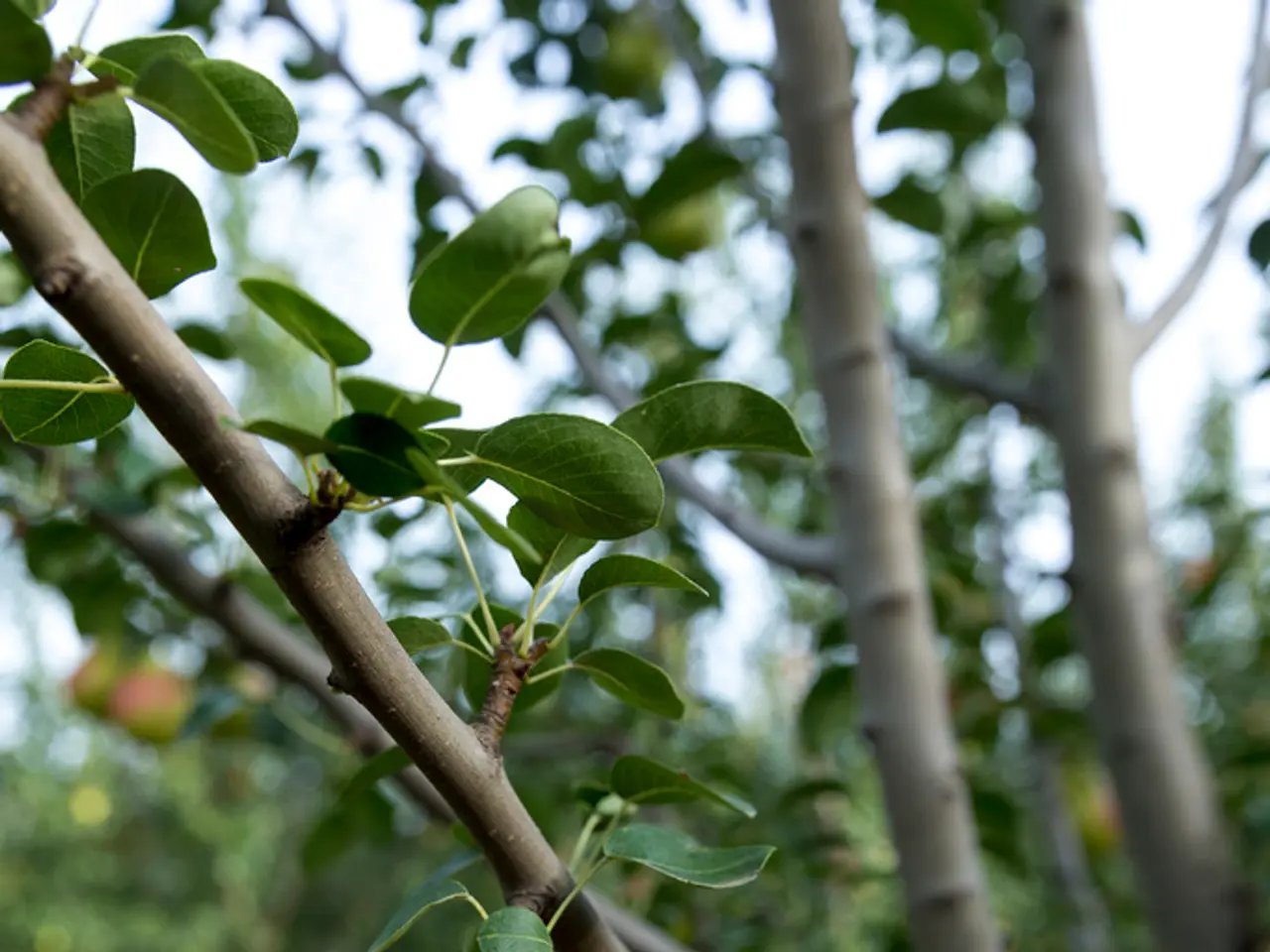Essential insights into apple cultivation: a comprehensive guide
In the world of home gardening, apple trees are a popular choice for their versatility and the delight they bring come autumn. While common varieties like Fuji, Honeycrisp, Golden Delicious, and Red Delicious are widely known and cultivated, there are other unique and flavourful options that deserve attention.
Fruit nurseries sell young apple trees, known as 'maidens', which are one year old and can be trained to fit any space or left to grow as an upright tree. The best way to plant these young apple trees is by using bare-root trees, which are lifted up when the plant is dormant and kept in cold storage.
When planting a bare-root tree, it's essential to prepare the ground. A warm, sunny, sheltered spot is ideal. Space horizontal wires at 60cm intervals, 10cm away from the wall or fence, with the lowest wire 30cm from the ground, for supporting young apple trees. Before planting, soak the roots of the bare-root tree in water for half an hour.
Once planted, prune the tree at an angle of 45 degrees, with a bamboo cane along the main stem for support and securing the tree in a few places using rubber ties or soft string. Reduce the height of the leading shoot and side branches by a third during winter pruning. Shorten new sideshoots by half, cutting just above an outward-facing bud during this period.
For gardeners seeking distinctive, flavourful apples suitable for small spaces or heritage collections, several uncommon varieties are excellent options to consider.
The Catshead Apple is a heritage variety from England known for its unusual, angular "cat-head" shape and sharp flavour. It is a mid-season apple producing large fruits and is valued for cooking.
The Black Twig Apple is a medium to large apple with a distinctive oblate to slightly conical shape. It is less widely known but valued as an heirloom variety suitable for garden cultivation.
Cox’s Orange Pippin, partially self-fertile and prized for its rich, complex, sweet, and tangy flavour, suits flavour-focused gardeners who want excellent taste more than high yield. It is available in dwarf forms and grows well in zones 5–9.
The Garden Delicious (Dwarf) is a compact variety under 10 feet tall, ideal for limited spaces like patios or balconies. It produces juicy, mildly sweet fruit with easy care and self-pollination capability.
These varieties offer diversity beyond common home garden choices and are promoted by specialty growers for home gardening.
Most apples need a pollination partner to fruit well. Crab apples growing close by can help with pollination, but for guaranteed fruit, grow another apple that flowers at the same time. 'Egremont Russet', a nutty, fragrant, rough-skinned eating apple, is a good choice.
The world's heaviest recorded apple weighed over 1.8 kilos and was a cross between the varieties 'Crispin' and Fuji, grown in Japan in 2005. The humble apple tree is a highlight of autumn gardens, and the 'Flower of Kent' apple tree, under which Sir Isaac Newton is said to have developed his theory of gravity, is still alive today and is now in the care of the National Trust.
Winter is the best time to prune established apple trees to keep them in shape, prevent them from getting too big, and help them produce more fruit. 'Blenheim Orange', an orange-flushed, soft flesh apple variety, is another unique choice for home gardeners.
For those wanting to grow apples that stand out in taste and appearance, these uncommon varieties are excellent options to consider. Happy gardening!
- For those who are looking for something more unique in their home-and-garden, the Catshead Apple, Black Twig Apple, Cox’s Orange Pippin, Garden Delicious (Dwarf), and Blenheim Orange are less common apple varieties worth considering.
- In addition to the common apple tree choices like Fuji, Honeycrisp, Golden Delicious, and Red Delicious, the lifestyle of a home gardener can be further enriched by exploring less traditional options such as the Catshead Apple, Black Twig Apple, and others.




